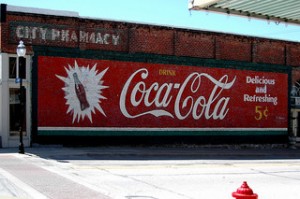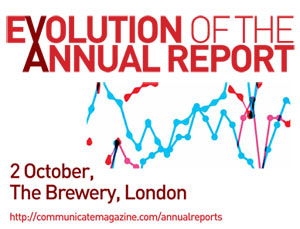 Early in my marketing career, I worked for a large financial company that had a red and green logo. It was at that time that I learned two very important things. First, a red and green logo and brand color palette were extremely limiting creatively. Back in the day, the vast majority of marketing materials were printed. Digital marketing didn’t really exist yet, so most creative marketing initiatives had at least one component that required offset printing. To keep costs down, printing was often limited to one or two colors. When you’re limited to printing marketing materials using only the primary colors in the brand color palette, and those two colors are red and green, it’s very difficult to design a piece that doesn’t look like it fell out of a box of Christmas decorations.
Early in my marketing career, I worked for a large financial company that had a red and green logo. It was at that time that I learned two very important things. First, a red and green logo and brand color palette were extremely limiting creatively. Back in the day, the vast majority of marketing materials were printed. Digital marketing didn’t really exist yet, so most creative marketing initiatives had at least one component that required offset printing. To keep costs down, printing was often limited to one or two colors. When you’re limited to printing marketing materials using only the primary colors in the brand color palette, and those two colors are red and green, it’s very difficult to design a piece that doesn’t look like it fell out of a box of Christmas decorations.
The second thing I learned all those years ago was to avoid red in brand color palettes and logo design. Remember, at the time, most marketing materials were printed. To keep costs down, one or two color printing required the use of halftones. There are many very nice halftones available when you’re working with a bright, Christmas red, but they quickly shift from red to pink. Suffice it to say, pink didn’t communicate the brand image that the financial executives wanted.
Today, creative marketers think differently about the color red. There is far less offset printing being done as print advertising comes a bit closer to death each year. Printed brochures have been replaced with digital versions, and a large amount of direct mail has been replaced with email marketing. In other words, my aversion to red in brand identity color palettes is not as strong as it was 20 years ago. However, it’s still a color that should be used carefully.
The psychology of color plays an important role in brand and marketing communications. Colors evokes feelings in people both consciously and subconsciously. Red is a hot color often associated with anger. In fact, researchers have found that anxiety and aggression increases in test subjects when they’re exposed to the color red. However, depending on the shade of red used, the meaning of the color could change. Its meaning and the emotions it elicits from people also changes depending on what part of the world they’re from. In the United States and most of Europe, red is most often associated with aggression, energy, and danger, but in Turkey and the Ivory Coast, red is associated with death and morning.
Bottom-line, my aversion to red for brand color palettes has decreased significantly over the years, but it’s still a color that I recommend marketers use with caution. Choose the right red to match your brand image while giving you creative flexibility across all media.
For more information about the psychology of the color red in branding, take a look at the infographic from Imagibrand below. I laughed out loud when I saw the reference to red and green in the infographic since I’ve been stuck in that situation before.

Image: Jayesh Nair
Susan Gunelius is the author of 10 marketing, social media, branding, copywriting, and technology books, and she is President & CEO of KeySplash Creative, Inc., a marketing communications company. She also owns Women on Business, an award-wining blog for business women. She is a featured columnist for Entrepreneur.com and Forbes.com, and her marketing-related articles have appeared on websites such as MSNBC.com, BusinessWeek.com, TodayShow.com, and more.
She has over 20 years of experience in the marketing field having spent the first decade of her career directing marketing programs for some of the largest companies in the world, including divisions of AT&T and HSBC. Today, her clients include large and small companies around the world and household brands like Citigroup, Cox Communications, Intuit, and more. Susan is frequently interviewed about marketing and branding by television, radio, print, and online media organizations, and she speaks about these topics at events around the world. You can connect with her on Twitter, Facebook, LinkedIn, or Google+.


